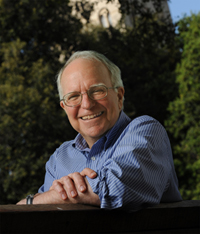In “The disappointing recovery of output after 2009,” the Federal Reserve Bank of San Francisco’s John Fernald, Stanford’s Robert Hall, Harvard’s James Stock, and Princeton’s Mark Watson look to answer a question vexing many economists: Why the nation is experiencing sluggish GDP growth rates given the steady decline of the unemployment rate post-Great Recession?
They note that the disappointing output growth has in fact been at its slowest during a recovery in the past 70 years, in contrast to the strength in the current recovery of the labor market. Specifically, cyclically adjusting for the depth of the 2007-2009 recession “creates a different, starker picture of the slow growth.” Adjusting for what a typical recovery would have looked like given the (now-low) unemployment rate, they find that the cyclically adjusted growth rate of output per capita was almost 2 percent (1.8 percent) per year slower than the average of the adjusted growth in the three preceding economic expansions—which cumulatively, comes to a 14 percent shortfall in the level of output per capita over the first seven years of the recovery.
The authors attribute this weak growth to a number of factors which they say predate the recession, and without changes to these trends, they argue, growth rates are much more likely to be around 2 percent than 3 percent going forward.
“Output grew substantially less in the recovery from the 2007-2009 recession than would normally have accompanied the healthy decline in unemployment…And it grew less than had been forecasted at the time of the trough in mid-2009. An explanation for poor output growth needs to start with two key facts—productivity grew substantially less than its historical growth rate, both in expansions and in general. And labor-force participation shrank an atypical and unexpected amount.” They conclude that “the large movements in both factors were in train prior to the recession, and cyclical effects contributed at most modestly to them.”
This paper is part of the Spring 2017 edition of the Brookings Papers on Economic Activity, the leading conference series and journal in economics for timely, cutting-edge research about real-world policy issues. Research findings are presented in a clear and accessible style to maximize their impact on economic understanding and policymaking. The editors are Brookings Nonresident Senior Fellow and Northwestern University Economics Professor Janice Eberly and James Stock, Brookings Nonresident Senior Fellow and Harvard University economics professor. Read the rest of the articles here.
Disclosure: Mark Watson is a paid research consultant for the Federal Reserve Bank of Richmond, but did not receive financial support for this paper from the Federal Reserve Bank of Richmond. James Stock is co-editor of the Brookings Papers on Economic Activity, and receives compensation in that capacity. He did not receive additional payment for this paper, and co-editor Janice Eberly exercises full editorial discretion. With the exceptions of the aforementioned affiliation, the authors did not receive financial support from any firm or person for this article or from any firm or person with a financial or political interest in this article. They are currently not an officer, director, or board member of any organization with an interest in this article.







